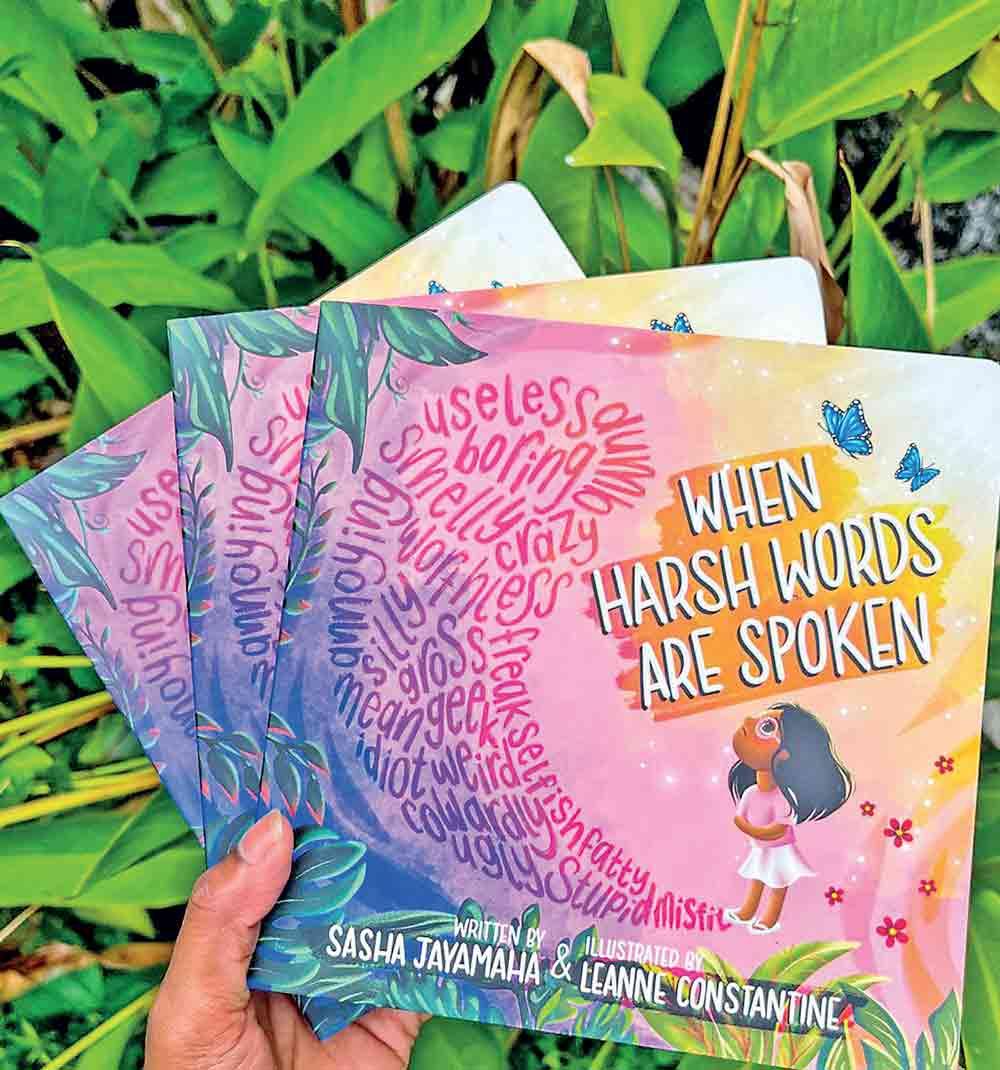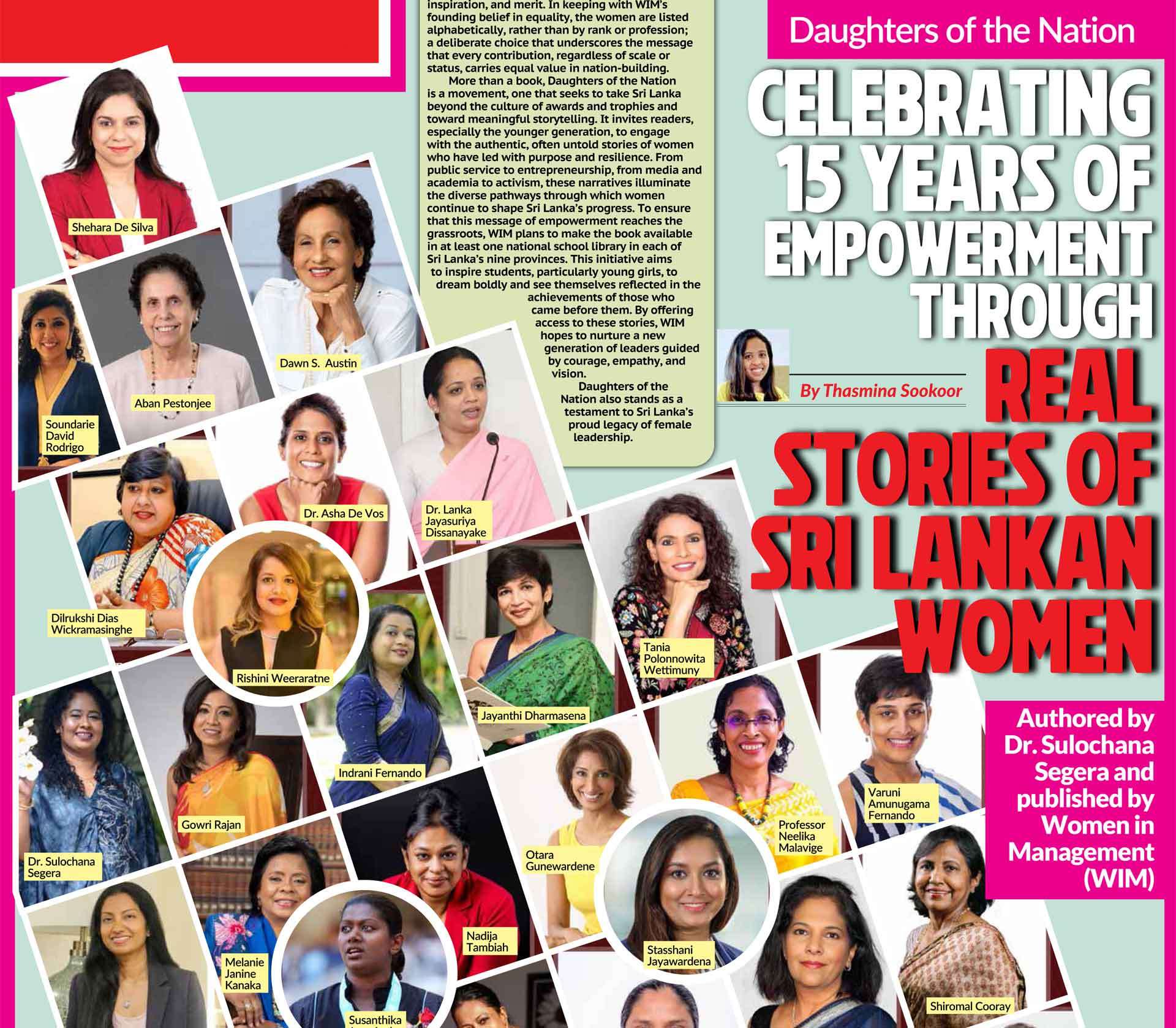Sasha Wickremaratne
A gentle guide to emotional resilience from When Harsh Words Are Spoken
In a world where children’s emotional needs are too often silenced or dismissed, When Harsh Words Are Spoken emerges as a tender and timely picture book that meets young readers exactly where they are. Authored by Sasha Wickremaratne Jayamaha and illustrated by Leanne Constantine, this book creates a safe, compassionate space for children to explore the impact of sadness, rejection, and loneliness emotions they frequently feel but rarely understand.
Far from being just another “feel good” story, When Harsh Words Are Spoken offers a healing framework for families, educators, and therapists navigating difficult conversations. Through striking illustrations and lyrical simplicity, it equips young readers with the emotional vocabulary to name what hurts and the resilience to move forward.
Q&A with Leanne Constantine, Illustrator of When Harsh Words Are Spoken
Q This story journeys through raw emotional terrain from shame and isolation to comfort and healing. How did you visually translate these emotional shifts while keeping the tone hopeful for children?
Capturing deep emotions for young children is tricky. The illustrations had to be simple enough for kids to relate to, yet expressive enough to convey complex feelings. Art is uniquely powerful in expressing what words often can’t, and it can be understood by all ages.
I used composition to show emotion placing the character in the background or isolating her with negative space to highlight feelings of loneliness. Colour theory also played a major role. Brighter colours evoke cheer, while muted tones suggest sadness. I softened the “sad” palette into pastels so the book remained engaging without being overwhelming.
I also drew from my own experiences. The way morning sunlight streams through a window always brings me hope so I used that as a recurring visual motif throughout the book.
Q Can you walk us through your creative process? Did Sasha’s manuscript guide your visuals, or was it a collaborative journey?
My creative process changes with every book. For this one, Sasha’s manuscript deeply influenced me but I also pulled from my own childhood memories. I related to the story in a personal way, which made the scenes come alive.
I immersed myself fully in this project. Many of the illustrations are inspired by real objects, places, and feelings from my own life. Illustrating this book became a therapeutic journey for me. It helped me revisit my younger self, reflect on lessons I’d forgotten, and channel those emotions into my art.
As an aspiring therapist, this is the kind of creative healing I hope to share with others.
Behind the Book: Q&A with the Author Sasha Wickremaratne Jayamaha

Q The book tenderly explores difficult emotions like sadness, rejection, and loneliness experiences children often internalize but rarely voice. What inspired you to tell a story that leans into these “blues” rather than brushing them aside?
Children often experience overwhelming emotions that they can’t always articulate. Feelings like sadness or rejection often manifest as tantrums or meltdowns not because the child is misbehaving, but because they haven't yet developed the tools to understand what they’re feeling. Emotional regulation in children requires support and guidance, especially as logical reasoning only begins to emerge around ages 10 to 12.
This book doesn’t focus on sadness for sadness’s sake. My goal was to help children navigate one of the most universal human experiences: hearing harsh words. Even as adults, we struggle with the impact of unkind words. For children, especially when those words come from trusted figures like parents, teachers, or friends the confusion and hurt can be even more lasting.
I believe books like this create safe spaces for emotional conversations. When caregivers read with children, they can pause, reflect, and talk. It teaches children that harsh words don’t define their worth and it strengthens the bond between adult and child. Establishing this open line of communication early builds a foundation for the teenage years, when emotional challenges intensify.
Ultimately, this book is about equipping children with self-awareness and resilience. The world won’t always be kind, but we can teach children how to process hurt, stay grounded, and develop inner strength.
That’s one of the joys of being a writer, watching people of all ages find themselves in the pages of a book. It validates their feelings, sparks healing, and reminds us that emotions deserve to be named, understood, and held with care.
Q One line that lingers is: “Alone is what I felt.” It’s so simple, yet deeply resonant. Why was it important to give space to emotions like loneliness and shame in a children’s book?
That line speaks to an emotion many of us have felt quiet but powerful. Statistics show that one in five people struggle with suicidal thoughts at some point in their lives. The children reading this book today will grow up and may one day face deep emotional lows. By introducing emotions like loneliness and shame in an age-appropriate way, we normalize their experience and give them the tools to cope.
That simple line isn’t the end of the story it’s the beginning of healing. The book reminds children that although there are heavy days, they don’t last forever. Storm clouds pass. By naming these emotions, we help children understand that they’re not alone in how they feel, and that hope and support are always ahead.
Q As a writer, counselor, and mother, how do you imagine this book being used in homes, classrooms, or therapy sessions to open up more honest conversations about emotional wellbeing?
Ideally, I see this book being read with children snuggled close, feeling safe and seen. I hope it’s used in classrooms and homes as a gentle entry point for deeper conversations about emotions. Storytime can become a space for reflection and emotional literacy.
But picture books also resonate beyond childhood. I use books like When Parents Get Older, When Parents Argue, and When Bad Things Happen even in adult counseling sessions. There’s something powerful about seeing your unspoken emotions reflected in a simple narrative.
That’s one of the joys of being a writer watching people of all ages find themselves in the pages of a book. It validates their feelings, sparks healing, and reminds us that emotions deserve to be named, understood, and held with care.

Leanne Constantine
Q What’s a belief or value you hold close even if it goes against the grain of today’s world?
One value I’ve held since childhood is the importance of a personal relationship with God. My grandmother used to tell me, “Talk to Jesus.” As I grew older, those words became a grounding truth.
In our home, we were taught that going to church doesn’t automatically make you a Christian just like standing in a garage doesn’t make you a car. Faith had to be personal. That message shaped my life. It was never about checking religious boxes, but about building an authentic connection with God. There are ups and downs, but if you cling to Him during those moments, He will carry you through.
Q In a 2022 interview with Daily Mirror Weekend, you painted a warm vision of the decade ahead. Has that vision shifted in 2025 or are you closer to that dream?
Much of that vision still holds true. Shari De Costa my business partner at Kiribath Publishers and I are both mothers balancing family, other professions, and our passion for publishing.
The publishing landscape has changed, especially with ongoing economic challenges, but we’ve grown intentionally and steadily. We publish books in Sinhala, Tamil, and English and continue to run annual community projects that donate books to children who lack access.
This year, we’re seeking donors for outreach initiatives, especially for the north and east. Many rural communities lack books in their dialect or the means to purchase them. We’re also developing English-language learning materials we’d love to distribute for free if we can secure the funding.
There’s still so much to look forward to. The dream is alive just evolving.
Q What would a truly decolonized, child-centric literary landscape in Sri Lanka look like? And how do we help make it a reality?
A truly decolonized, child-centric literary landscape is one where children see themselves reflected names, skin tones, languages, families, and environments in the books they read.
At Kiribath Publishers, we intentionally create stories rooted in Sri Lankan identity. From Guess Who, which features local animal names, to Ocean Living, Sigiriya Counting Book, and Colour My Sri Lankan, we highlight our culture and landscape in accessible, affirming ways. We also publish in all three languages to ensure equal access.
We want children to feel seen, valued, and proud of their heritage.












